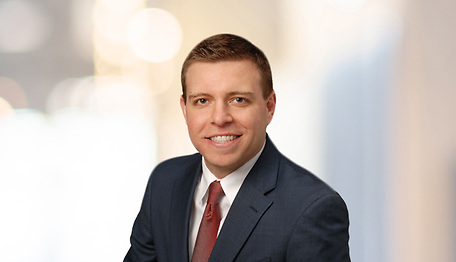Northern District of Mississippi Finds That Non-Work Property Damages Are Not Subject to AIA’s Waiver of Subrogation Clause
In recent months, the Northern District of Mississippi has grappled with how to interpret waivers of subrogation in American Institute of Architects (AIA) construction industry contracts and, specifically, how they apply to work versus non-work property. The distinction between work and non-work property has been commonly litigated and remains a hotly debated topic when handling subrogation claims involving construction defects.
In Liberty Mutual Fire Ins. Co. v. Fowlkes Plumbing, 2018 U.S. Dist. LEXIS 23515 (February 12, 2018), a fire consumed the entire insured risk when one of the defendants was performing window restoration services. Subsequently, the insured’s subrogated insurer filed suit against several defendants involved in the construction project at issue. In response to the defendants’ motion for summary judgment, the District Court for the Northern District of Mississippi considered whether the waiver of subrogation clause in AIA contract form A201-2007 precluded the subrogated insurer from recovering damages from the defendants. The court held that the waiver of subrogation provision contained in AIA document A201-2007 barred the insurer from recovering for damages to the work itself, but did not apply to non-work property.
The defendants argued that the parties incorporated, by reference, the waiver of subrogation provision in AIA document A201-2007, the general conditions for the construction contract, into the parties’ agreement. The plaintiff argued that the A201-2007 form was not part of the agreement and that, even if it was part of the agreement, the waiver of subrogation provision did not apply to damages to non-work property.
In considering whether the waiver of subrogation provision was incorporated into the parties’ agreement, the court examined the four corners of the contract and found that the agreement contained numerous references to document A201-2007. The court quickly concluded that the waiver of subrogation provision contained in A201-2007 was clearly incorporated into the parties’ agreement.
Next, the court determined the scope of the waiver. The court began its analysis by examining the waiver of subrogation provision at issue. The provision essentially states that the waiver will apply to any damages “covered by property insurance obtained pursuant to this Section 11.3 or any other property insurance applicable to the Work, except such rights as [the parties] have to proceeds of insurance held by the Owner as fiduciary.” AIA Document A201-2007, Section 11.3.7 (emphasis added).
To determine if the waiver was applicable to non-work property damages – i.e. damage to portions of the building not involved in the window restoration project – the Liberty court considered two questions. First, whether the phrase “to the extent covered by property insurance obtained pursuant to Section 11.3” means any insurance – such as an existing property insurance policy covering both the parts of a building under construction and other parts of a building – that satisfied the owner’s insurance obligations pursuant to section 11.3.1. Second, whether the phrase “any other property insurance applicable to the Work” refers to claims paid out on a policy that covered the “Work” or only claims for damage to the “Work” itself.
To resolve the issues presented, the Liberty court considered the two approaches courts use to determine the scope of the waiver – the “insurance source” approach and the “damage type” approach. The insurance source approach is followed by a majority of jurisdictions. Using this approach, courts apply the waiver if the insurance proceeds were paid pursuant to a policy obtained to satisfy the owner’s insurance obligations set forth in section 11.3.1, regardless of whether some of the proceeds were paid for damages to non-work property. The damage type approach is followed by a minority of jurisdictions and provides that the waiver of subrogation in section 11.3.7 only applies to damages to “Work” property. Thus, pursuant to this approach, damages that are sustained to non-work property are not subject to the waiver of subrogation provision and are recoverable.
The Liberty court adopted the damage type approach followed by a minority of jurisdictions. The court adopted this approach, in part, because, in Fidelity & Guaranty Ins. Co. v. Craig-Wilkinson, Inc., 101 F.3d 699 (5th Cir. 1996), the Fifth Circuit previously indicated that the District Court should follow the damage type approach. Fidelity relied on the analysis in S.S.D.W. Co., v. Brisk Waterproofing Co., Inc., 556 N.E.2d 1097 (N.Y. 1990), a case that had similar facts to the Liberty case.
The defendants subsequently filed a motion for reconsideration, arguing that the court wrongfully held that the waiver did not apply to non-work property that was damaged during the construction period. In Liberty Mutual Fire Ins. Co. v. Fowlkes Plumbing, 2018 U.S. Dist. LEXIS 59311(April 3, 2018), the District Court rejected the defendants’ argument and denied the motion for reconsideration. However, recognizing that there is a substantial ground for a difference of opinion, the court subsequently granted the defendants’ request for permission to make an interlocutory appeal of the court’s decisions to the Fifth Circuit Court of Appeals. See Liberty Mut. Fire Ins. Co. v. Fowlkes Plumbing, LLC, 2018 U.S. Dist. LEXIS 77468 (May 7, 2018).
The Liberty decisions and the ensuing appellate action provide but one example of why subrogation professionals must carefully scrutinize waivers of subrogation with respect to AIA contracts and keep abreast of case law interpreting and applying such provisions. The AIA provisions can be extremely complicated to harmonize with one another, especially when the law is constantly in flux.
PRACTICE AREAS
Practice Areas
KEY ATTORNEYS
-
Partner

